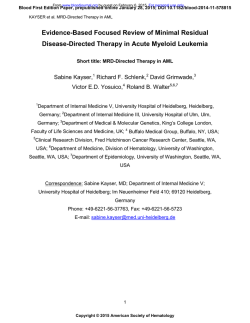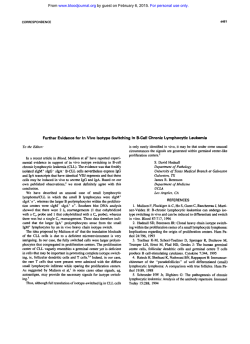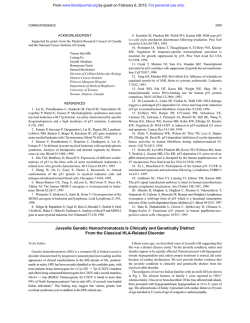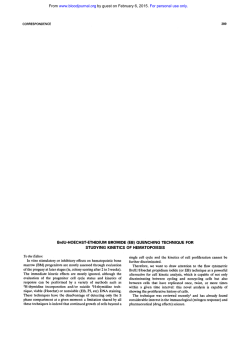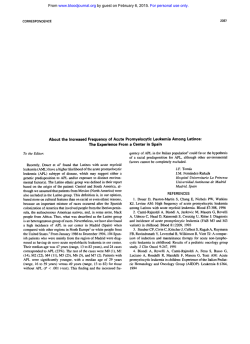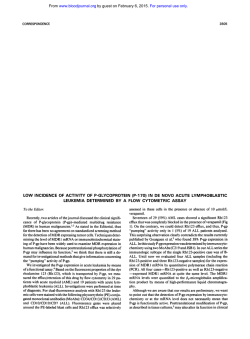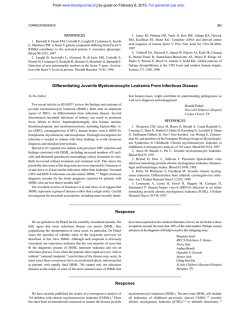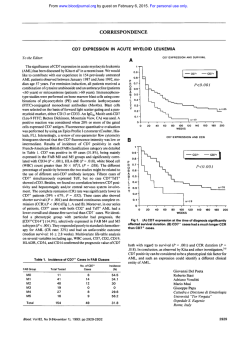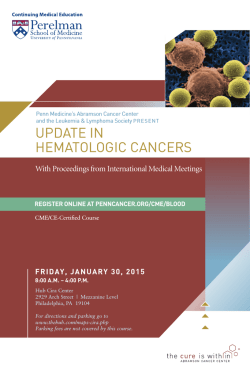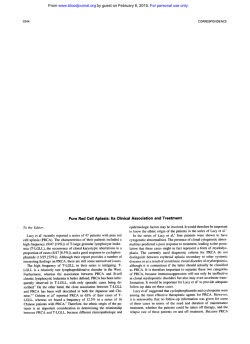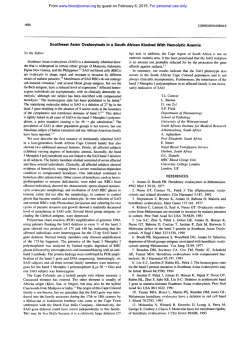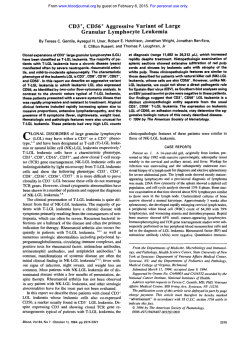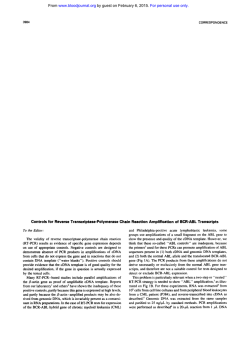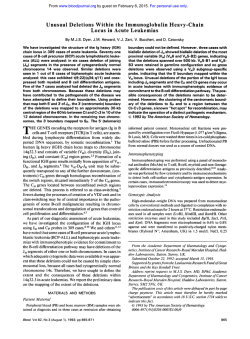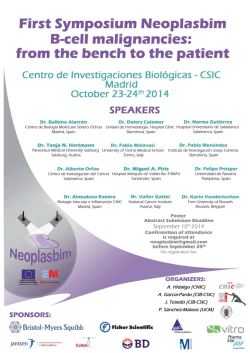
Detection of Minimal Residual Disease in Acute Leukemia For
From www.bloodjournal.org by guest on February 6, 2015. For personal use only. CORRESPONDENCE 2452 Detection of Minimal Residual Disease in Acute Leukemia To the Editor: Compana and Pui' have failed to mention in their well-balanced and lucid review article on minimal residual disease (MRD) in leukemia two important practical aspects of quantitating MRD by polymerase chain reaction (PCR). First, the quantitation of MRD by PCR is not precise, and the method based on Poisson statistics used by Brisco et aI2 is no exception. If MRD quantitation were to be performed on the same sample on different days, up to twofold difference in the amount of MRD may be observed. This poor reproducibility should be kept in mind before changing treatment based on the detection of MRD. Second, themethod of preparation of the remission bone marrow for DNA extraction may also influence the amount of MRD detected. For example, the PCR method is likely to amplify target genes from DNA released from dead cells (not clonogenic). The time taken for the bone marrowto remove the dead leukemic cells may be variable depending on the initial leukemic load and the ability of the reticuloendothelial system to remove the debris. DNA prepared from a buffy coat preparation or a whole bone marrow suspension is more likely to contain DNA from dead cells as opposed to DNA prepared from, eg, Hypaque-Ficoll-separated bone marrow cells. These two practical issues may explain the wide variations in the reported percentage of patients with MRDatthe time of initial remission (around 6 weeks from diagnosis) and might partly explain the observation that the percentage of patients with detectable MRD is lower in studies reporting MRD after several months from diagnosis.' These practical issues must be addressed in prospective studies designed to validate the prognostic importance ofMRDin acute leukemia. It is premature to intensify therapy in patients with a high amount ofMRD at the time of initial remission andto decrease therapy in patients with no detectable MRD. It must be kept in mind that prognosis in leukemia is relative to the txeatment and that good results obtained in patients with no MRD may be because ofthe currently available therapy, which is better than the therapy used 2 decades ago. To change the current practice in good prognosis patients may be an invitation for disaster. R. Seshadri Department of Hematology Flinders Medical Centre South Australia REFERENCES 1. Campana D, Pui CH: Detection of minimal residual disease in acute leukemia: Methodological advances and clinical significance. Blood 85:1416, 1995 2. Brisco JM, Condon J, Hughes E, Neoh S, Sykes PJ, Williams RH, Seshadri R, Toogood I, Waters K, Tauro G, Ekert H, Morley AA: Prediction of outcome in childhood acute lymphoblastic leukaemia by molecular quantification of residual disease at the end of induction. Lancet 343:196, 1994 3. Potter MN, Cross NCP, van Dongan JIM, Saglio A, Oakhill CR, Bartram CR. Goldman J: Molecular evidence of minimal residual disease after treatment for leukemia and lymphoma: An updated meeting report and review. Leukemia 8:1302, 1993 From www.bloodjournal.org by guest on February 6, 2015. For personal use only. 1995 86: 2452-2453 Expression of HLA-DR (major histocompatibility complex class II) on neutrophils from patients treated with granulocyte-macrophage colony- stimulating factor for mobilization of stem cells [letter] SP Mudzinski, TP Christian, TL Guo, E Cirenza, KR Hazlett and EJ Gosselin Updated information and services can be found at: http://www.bloodjournal.org/content/86/6/2452.1.citation.full.html Articles on similar topics can be found in the following Blood collections Information about reproducing this article in parts or in its entirety may be found online at: http://www.bloodjournal.org/site/misc/rights.xhtml#repub_requests Information about ordering reprints may be found online at: http://www.bloodjournal.org/site/misc/rights.xhtml#reprints Information about subscriptions and ASH membership may be found online at: http://www.bloodjournal.org/site/subscriptions/index.xhtml Blood (print ISSN 0006-4971, online ISSN 1528-0020), is published weekly by the American Society of Hematology, 2021 L St, NW, Suite 900, Washington DC 20036. Copyright 2011 by The American Society of Hematology; all rights reserved.
© Copyright 2025



